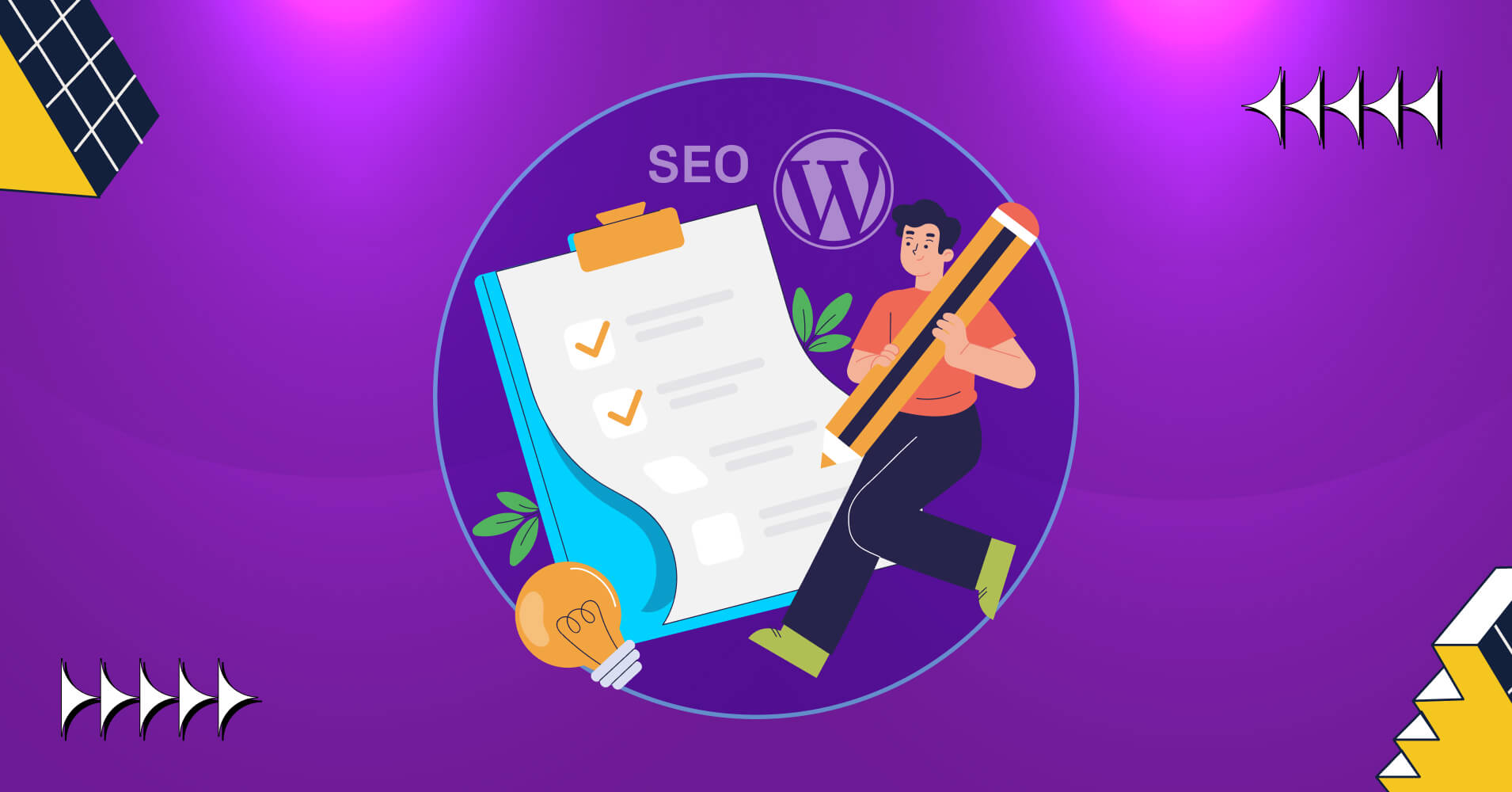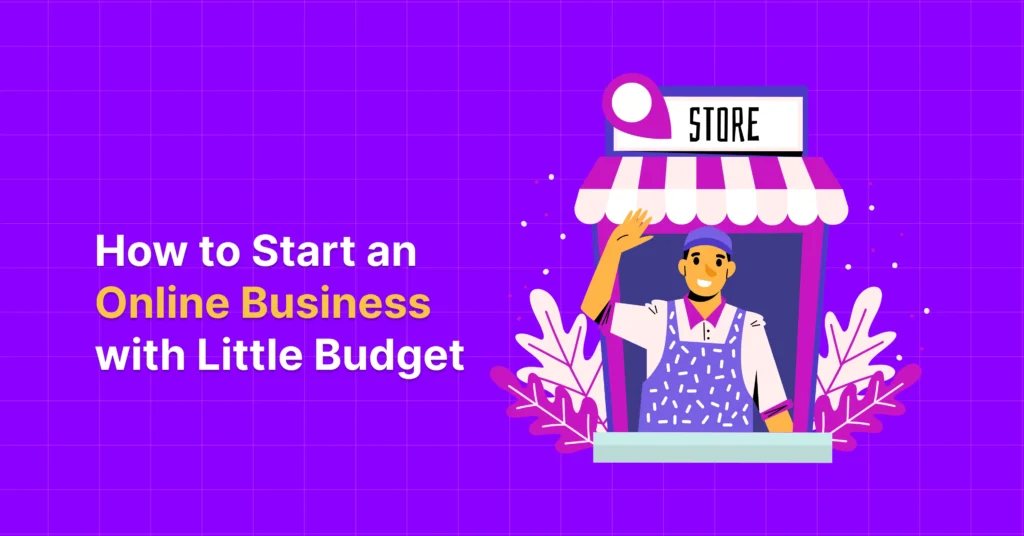
A Comprehensive WordPress SEO Audit Checklist for 2023
Imagine you’ve got a website – your online domain a virtual kingdom of your digital business. But just having a website in the boundless space of the internet, is not enough!
You need people to find it, right? And that’s where the art of search engine optimization (SEO) strategy comes into play. It helps your site become trusted and brings in the right visitors.
However, creating a strong strategy for your WordPress SEO audit isn’t a one-time task; it’s a long-term activity. Whether you’re growing your business or just trying to do better online, keeping your site’s rankings high is really important. It can be a bit confusing if you are not well-versed in this sector.
But fear not! In this blog, we’ll talk about the WordPress SEO audit checklist that can be useful for your own or your client’s website.
Let’s start!
What is an SEO audit?
An SEO audit is a complete analysis of a website’s search engine optimization (SEO) performance and overall health. The primary purpose of an SEO audit is to identify key points where a website needs to improve its visibility in search engine results pages (SERPs), increase organic traffic, and enhance the overall user experience.
This process helps website owners, marketers, and SEO professionals assess their current SEO strategy and make informed decisions to optimize their online presence.
Here are the key components involved in an SEO audit:
- Technical SEO audit
- On-Page SEO audit
- Off-Page SEO audit
Why is an SEO audit important for WordPress sites?
To improve your website’s search engine visibility and overall performance, Identifying and fixing the issues of your website is very important. By conducting an SEO audit, you can pinpoint your website issues, optimize your content, enhance your website’s user experience, and ensure that search engines can index and rank your pages effectively.
An SEO audit examines how on-page and off-page optimization affects your website’s performance and rankings. It’s like a website health checkup. WordPress SEO audits indicate your site’s organic traffic. They can reveal issues that could affect your site’s visibility, such as
- Poor architecture that hinders search engines from crawling and indexing your site
- Poor off-page SEO like low-quality backlinks
- Invalid or duplicate content and broken links
- Slow loading
Thus, WordPress SEO audits are necessary on a regular basis. It helps you improve, boost search engine rankings, and increase traffic and conversions.
How to conduct a WordPress SEO audit
Conducting a WordPress SEO audit involves evaluating different aspects of your website to identify areas for improvement in terms of search engine optimization. Keep in mind that it is an ongoing and long-term process that requires consistent effort and adaptation.
Regularly evaluation based on performance data, algorithm changes, and evolving industry trends improves its search engine rankings over time
Here’s a step-by-step guide on how to perform a WordPress SEO audit:
Technical SEO audit for WordPress website
Technical SEO refers to the optimization of a website’s technical elements and infrastructure to improve its search engine visibility and user experience. It focuses on ensuring that search engines can crawl, index, and understand the content of a website efficiently.
Key aspects of technical SEO include:
Solve meta tag issues
Your Meta Tags are the snippets of HTML elements that provide information about a web page to search engines so that it can rank on suitable searches. When performing an SEO audit, you should ensure that the meta tags are not missing from your blog posts or product pages.
This is because your title is the first thing people will read in search engine page results and decide whether they want to click on your link or not. Similarly, meta descriptions are short text that appears under your post title and URL on search engine page results.
Well-written Meta description helps to describe your article to search engines and users and get more clicks.
Check for canonical tag issues
A Canonical URL is important for your website SEO which help Google to understand which URL you want to show in search result. Check all versions of your website URLs like
- HTTPS and HTTP or
- WWW and non-WWW leads to the same website
If every URL of your website doesn’t redirect to the same website, Google will count every URL as a separate website. So make sure to fix this type of error.
Check for and fix HTTPS issues
Check your website to see if your website URL has HTTPS / SSL or not. You can see it in your browser search bar.
An SSL certificate or HTTPS encrypts the communication between your website server and your user’s browser.
Having HTTPS on your website URL is vital for ranking in search results and Google always gives priority to secure websites. If you don’t have it’s time to buy an SSL certificate for your website and shift from HTTP to HTTPS.
Check and fix Robots.txt issues
Robots.txt is a text file that informs search engine robots which page of your website to view and index and which not to.
Basically, robots.txt files tell user agents (software that crawls the web) which parts of a website they can and cannot crawl. These crawl instructions tell user agents what to do by disallowing or allowing their action.
If you add pages, files, or directories to your site that you don’t want web users to see or search engines to index, you should change your Robots.txt file. This will make sure that your website is safe and that your search engine optimization works as well as it can.
Spot and fix XML sitemap issues
A good XML sitemap is like a map of your website that Google can use to find all the important pages. XML sitemaps can be helpful for SEO because they make it easy for Google to find your most important pages, even if your internal links aren’t perfect.
Having an XML sitemap is highly beneficial for several reasons:
- Improved search engine crawling
- Faster discovery of new content
- Better indexing
- Enhanced SEO
Check your URL structure
For effective SEO, ensure your URL structure is well-organized. Keep your URLs short, descriptive, and closely related to the content of the individual page. Remember to use hyphens or dashes (-) after every separate word for clarity and readability, and stick to lowercase letters. Because Google considers hyphens as separators between words in URLs.
Here is an example:
Good: https://www.example.com/blog/seo-best-practices/
Bad: https://www.example.com/page1?id=123
When structuring your URLs, try to create a logical hierarchy by categorizing and subcategorizing them. Don’t forget to include your target keywords in the URLs, but always be cautious about avoiding excessive keyword stuffing and keep it short and concise.
Here is an example:
Good: https://www.example.com/category/affordable-wireless-earphones/
Bad: https://www.example.com/category/best-affordable-cheap-inexpensive-wireless-earphones-for-sale/
Mobile responsiveness
To ensure your WordPress website SEO audit it’s important to prioritize mobile-responiveness. More than 55% of the website traffic comes from mobile devices. Google has even introduced an algorithm that favors mobile-friendly sites. And Google indexes your website’s mobile version rather than the desktop version. Therefore, If you want to improve website rankings, your website must be mobile-friendly.
To check your website’s mobile-friendliness, you can utilize various testing tools, one of which is Google’s Mobile-Friendly Test tool. Just simply paste your website URL here after analyzing it will show you whether your website is Mobile responsive or not.
Additionally, optimizing images is an essential element for a mobile mobile-friendly website. Every image on your website like blog images, featured images, and images generated by AI, should dynamically adjust their size according to the user’s device screen size and resolution. This prevents images from being too large, causing slow Website loading speed, or too small resulting in poor image quality.
Maintain better user experience (UX)
Always keep the user experience (UX) at the forefront of your website development strategy. Begin by designing the user experience primarily for mobile devices and then expand it to larger screens. Maintain touch-friendly elements, such as buttons, links, and responsive navigation, to ensure a seamless and enjoyable user experience across all devices. Working with a trusted UX design agency can further help you create intuitive interfaces that engage users and drive better results.
On-page SEO audit for WordPress website
On-page SEO (Search Engine Optimization) is the technique of improving individual web pages in order to increase search engine results and attract more organic (unpaid) traffic. It includes optimizing various on-page elements and content to appeal to both search engines and human users.
Here are some key checklists to audit on-page SEO:
Identify target keywords
Keyword research is the foundation of on-page SEO and it’s obvious to identify the keywords that are most relevant to your content. Start by brainstorming the primary topics and themes of your content. Then, use keyword research tools to identify relevant keywords and phrases.
You can use keyword research tools like Google Keyword Planner or SEMrush to discover relevant keywords and assess their search volume and competitiveness. Pay attention to search volume, keyword difficulty, and user intent when selecting your target keywords. Aim for a mix of short-tail and long-tail keywords to capture a broader audience.
Optimize the title tag
The title tag is one of the most critical on-page SEO elements. It’s the title that appears at the top of your browser window that users see and as the clickable link in search engine results. Ensure that your title tag is both enticing and descriptive, including your primary keyword naturally.
Try to place your primary keyword toward the beginning of the title, as this carries more weight in search engine algorithms. Keep it concise, typically under 60 characters, to avoid shortening in search results.
Write your headline in an H1 tag
When you structure your content, use an H1 tag for the main headline or title. The H1 tag signifies the primary heading of your page and helps search engines understand the topic’s importance. It differs from a title tag because the H1 appears on your page. Not the SERP.
The title tag and the H1 tag should be identical. Because it also tells Google and users what the page is about. However, there is basically never a character limit here. Simply create an H1 that is relevant to your website and encourages visitors to stay. Include at least one of your core keywords.
Write a Meta description that boosts clicks
The meta description is a brief summary that appears under the title in search results. Although it doesn’t directly impact rankings, it plays an essential role in attracting clicks from search engine users. Prepare a compelling meta description that attracts users to click through to your page.
It’s an opportunity to showcase what your page offers and why it’s valuable. And make sure it includes your primary keyword. Follow this simple method to produce beautiful and exceptional meta descriptions:
- Combine your target keyword(s) with other keywords (if relevant)
- Include descriptions and/or a call to action
- Keep the length of 155-160 characters to ensure that your whole meta description is displayed without being shortened in search results
Add target keywords to your body content
Google analyzes keywords and context to decide whether a page is related to a given keyword. If your body text does not include your target keyword, Google may believe your website is not relevant to the keyword.
When performing on-page optimization, put your primary keyword within the first paragraph. Then uses secondary keywords throughout the content. But avoid keyword stuffing, because when you force keywords into content its don’t seem natural.
Here’s an example of keyword stuffing from Google:
Remember that you’re writing for people. Not only search engines. Also focus on providing valuable, informative content that uses keywords where relevant.
Review your content quality
High-quality and well-optimized content is the key to attracting and retaining visitors and improving your website’s search engine rankings. By addressing factors such as duplicate content, keyword targeting, and adherence to Google’s Quality Guidelines, you can ensure your content is both engaging and optimized for search engine performance.
Here are some of the main content quality indicators:
- Accuracy: Ensure accuracy, flawless grammar and spelling of your content
- Originality: Prevent content duplication and clear of plagiarism by not copying large amounts of text
- Length: Engage with concise but comprehensive content that delivers all the necessary information
- Readability: Avoid overcomplicating or simplifying your content to keep readers engaged.
- Formatting: Make sure you are maintaining a standard structure like paragraph breaking, subheadings, tables, bullet points, and others
- Tone of voice: Adapt your tone to your topic and audience for effective communication
Improve navigation with internal links
Internal linking not only improves navigation but also helps search engines discover and index more of your content. Insert links to related articles or pages within your content. Choose anchor text that provides context and includes relevant keywords.
Off-Page SEO audit for WordPress website
Off-page SEO refers to the activities and methods used outside of your website to increase its search engine rankings and online authority. It’s opposed to on-page SEO, which focuses on optimizing aspects of your website and developing a favorable reputation and credibility for your site on the internet.
If you want to work on off-page SEO you should follow these checklists to build authority online–
Work on link-building
Link building is a core component of your off-page SEO strategy. It involves acquiring high-quality, relevant backlinks from other websites to your own. Quality backlinks act as votes of confidence in the eyes of search engines, indicating that your content is valuable and reliable.
Effective link-building strategies include:
- Guest Posting: Write high-quality guest posts for authoritative websites in your niche, including a link back to your site
- Broken Link Building: Find broken links on other websites and offer to replace them with relevant links to your content
- Content Promotion: Promote your content on social media and within your industry to attract natural backlinks
- Outreach: Reach out to industry influencers and bloggers to request backlinks or collaborations
Content marketing
Content marketing is a powerful strategy for creating valuable, shareable content to attract and engage your target audience. High-quality content can naturally attract backlinks, improve your website’s authority, and increase its visibility in search results.
Effective content marketing tactics include:
- Blogging: Regularly publish informative and engaging blog posts on topics that are relevant to your audience
- Infographics: Create visually appealing infographics that express information in a digestible format
- Videos: Produce video content to engage users and encourage sharing
- Ebooks and Guides: Offer in-depth guides or ebooks that demonstrate your expertise
- Case Studies: Share real-world examples and success stories related to your products or services
Analyze your backlinks
Regularly analyzing your backlinks is essential for off-page SEO. It helps you identify toxic or low-quality links that may harm your site’s rankings and allows you to disavow them. Tools like Google Search Console and third-party SEO software can assist in monitoring and evaluating your backlink profile.
Take your WordPress SEO audit to the next level
Conducting an SEO audit is an in-depth, but important step if you want your WordPress website to rank in the SERPs. But the ranking doesn’t happen overnight, it takes time. Consider this article as a roadmap that guides you through your entire SEO audit journey for your WordPress site.
We hope this article helps you understand and learn how to conduct an SEO audit for a WordPress website and rank higher on Google to lead your industry and take your business to the next level.
You can leave your thoughts in the comment section.
Have a wonderful day!

Jhorna Rani Gope
Meet Jhorna Gope, a passionate Digital Marketer and content-writing enthusiast. Along with this, she loves exploring new things with tech world, planting trees, and cherishing time with her family.
Table of Content
Subscribe To Get
WordPress Guides, Tips, and Tutorials












Leave a Reply